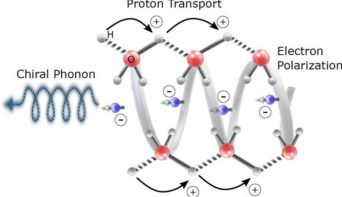A study of electrons tunnelling between quantum wires appears to confirm that electrostatic interactions between electrons are much more significant in one dimension than in two or three dimensions. The parallel wire set-up devised by physicists at the Weizmann Institute of Science in Israel and Bell Labs in the US is the first of its kind, and they are optimistic that it could also reveal an exotic effect known as spin-charge separation (O Auslaender et al 2002 Science 295 825).
The electrons in a three-dimensional metal can be described as a ‘Fermi liquid’, in which electrostatic – or Coulomb – interactions between the negatively charged particles play only a minor role. But physicists believe that electrons confined to one dimension will behave as a so-called Luttinger liquid, in which Coulomb interactions are much more important. Ophir Auslaender and co-workers studied the quantum mechanical ‘tunnelling’ of electrons between virtually one-dimensional wires to find out if this is true.
‘Understanding how electrons move in a single wire can help us to understand how more complex one-dimensional systems behave’, Auslaender told PhysicsWeb. ‘Recently there have been some attempts to understand high-temperature superconductors based on the physics of these systems.‘
Auslaender’s team made two parallel ‘quantum wires’ from gallium arsenide. The wires were tens of nanometres in diameter, several micrometres long and separated by a six-nanometre insulating barrier of aluminium gallium arsenide. Quantum mechanics allows electrons to ‘tunnel’ from one wire to the other through this barrier.
In order to tunnel between these wires, an electron must have a precise amount of energy and momentum. The energies and momenta of the electrons are controlled by a voltage applied across the wires and a magnetic field applied perpendicular to them.
By measuring how the conductance of the insulating barrier changes as the energy and momentum were adjusted, Auslaender’s team were able to map the excitation spectrum of electrons in one dimension for the first time.
At a certain combination of voltage and momentum, the researchers found that the ‘excitation velocity’ of the electrons was 30% greater than it was for non-interacting electrons. According to Auslaender’s team, this increase is evidence for the significant interactions between electrons moving in one dimension.
‘The one-dimensionality restricts the screening ability of the electrons and renders the mutual interactions very effective’, said Auslaender.
Auslaender and colleagues hope that their technique could lead to the first observation of ‘spin-charge separation’. In this phenomenon – which was predicted in 1968 – electrons confined to one dimension can be excited into states where they have a spin but no charge, or a charge but no spin. The researchers admit that more work is needed, but by mapping the excitation spectrum of a one-dimensional electron system, they could have taken a crucial step towards detection of this exotic effect.



